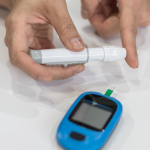Here are the final four exciting developments in science, health and technology of 2017. And, a prediction for what innovation could be truly disruptive in the future.
Type 1 Diabetes
We all understand the impact of a gaping wound, or the wasted appearance of a body overrun by cancer. But often there are more silent and invisible conditions that not only invoke a physical furor, but emotional and psychological pain as well. Type 1 Diabetes is such a malady. Thankfully, major advances are ongoing.
Recently an important paper — one which had the potential to revolutionize the treatment of type 1 diabetes — was retracted because its results could not be replicated. Far from being a negative incident, this is the way that science should be done.
The human body's immune system is similar to having millions, if not billions, of snipers at the ready aiming and poised to shoot any foreign invader. This is why transplanted tissues and organs are so vulnerable to rejection. But a recent discovery by MIT researchers hopes to make them more viable.
Type 1 diabetes, previously known as juvenile diabetes, affects approximately 1.25 million American children and (much less commonly) adults. Unlike the much more common type 2 diabetes, which is largely related to lifestyle, type 1 an autoimmune disease
Scientists have been conducting studies using human embryonic stem cells (ESCs) in the hopes of treating diseases such as Alzheimer s disease, paralysis and diabetes. The appeal of these cells is that they are able to transform into any kind of cell found in the body. Two recent studies have been exploring the use of stem cells
The FDA approved a new therapy last week to improve blood sugar control in patients with diabetes primarily type 1 (insulin-dependent). The drug, Afrezza, is a novel short acting insulin formulation administered by
The pancreas of an individual with type 1 diabetes does not produce the hormone insulin, which is essential to allow body tissues to take up and use glucose from the blood. Before the discovery of insulin in the 1920s, such people had little chance of living a normal lifespan. And even with insulin injections, it is difficult to keep blood sugar within normal boundaries. Too little insulin, or insulin injected at the wrong time, could mean high blood sugar and later complications such as blindness and kidney failure. Conversely, too much insulin could mean hypoglycemia (low blood sugar), which in turn can lead to passing out a real threat if a person is driving, for example.
Talk of a rapidly accelerating diabetes epidemic has settled into our medical and public health
The Centers for Disease Control and Prevention (CDC) reported on Wednesday major changes are being seen in what is still the


